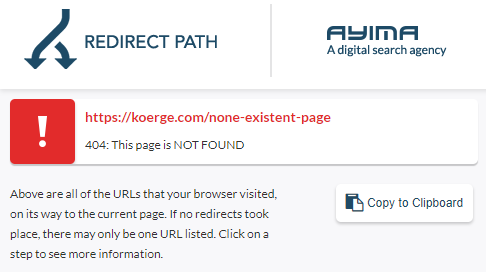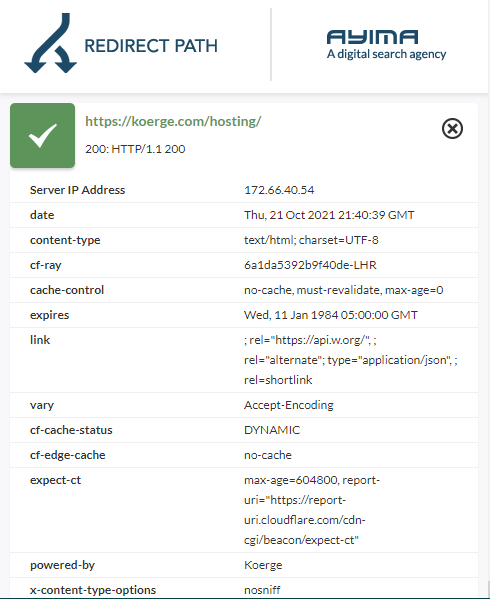What are server status codes?
Status codes tell internet browsers such as the one you are using right now if a page has successfully loaded, redirected or encountered any errors. HTTP response status codes are grouped into five classes ranging from 1XX to 5XX:
- 1XX Informational
- 2XX Successful
- 3XX Redirects
- 4XX Client Errors
- 5XX Server Errors
SEO use Redirect Path to observe status codes often to find problems with a website or to detect redirects (when one page redirects to another page) which can negatively impact your organic ranking performance if done incorrectly.
How do I check my website’s status code?
We highly recommend using Ayima’s Redirect Path Chrome extension which can be downloaded free, directly from Chrome Web Store.

What is Ayima’s Redirect Path?
Ayima’s redirect path Chrome extension enables you to monitor what status code a given page has served, making it a vital tool for any SEO consultant.
An example of this can be seen here:

Our homepage returned a 200 status code, identified by green icon and text in Ayima’s Redirect Path , this means the page has loaded successfully. Let’s navigate to an invalid page to see what happens.

As seen above we are presented with a red warning and a 404 status code which means the page was not found.
Now let’s see what happens when we navigate to a URL that redirects to another page.

The first URL we requested served us a 301 redirect, highlighted in blue whereas the second URL highlighted in green loaded successfully.
Can I check response headers with Ayima’s Chrome Redirect Path?
Yes, the Redirect Path extension allows you to look into server response headers by simply clicking on the status code within Redirect Path to display additional information. An example of this can be seen here:
Information such as browser cache expiry times, what type of web server is being used, presence of HTTP header canonical URLs and many more can be found here.

Who would use the Redirect Path Extension?
The Chrome Extention is primarily used by marketing consultants within the SEO department, furthermore web developers also commonly use it to diagnose server and web-related issues.






